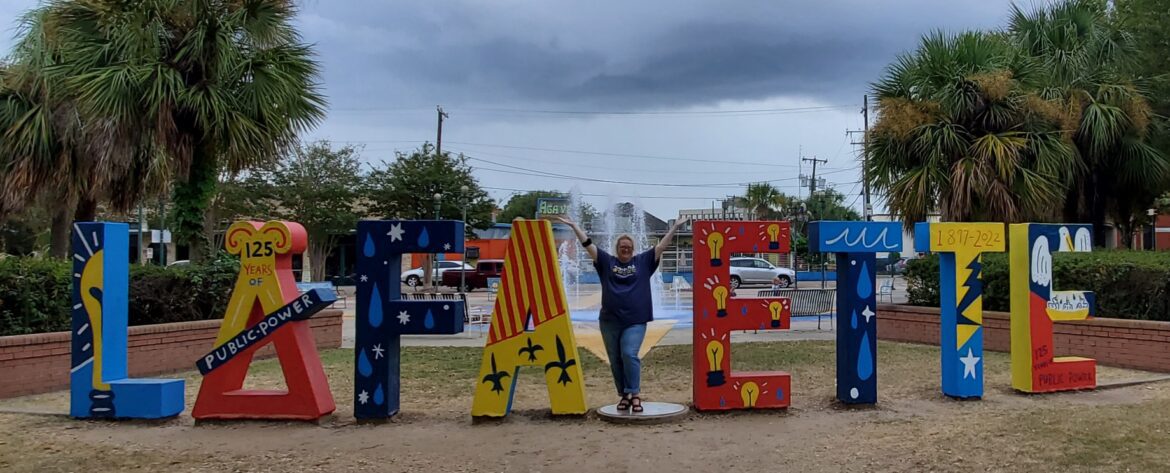
We may earn money or products from the companies mentioned in this post. This helps support what we do and in no way costs you a thing.
I know I have already talked about my swamp tour during my last visit, but there is no doubt that boat tours are one of the best ways to check out the Atchafalaya Basin. One of the many draws to Louisiana is the state’s diverse and rich history.
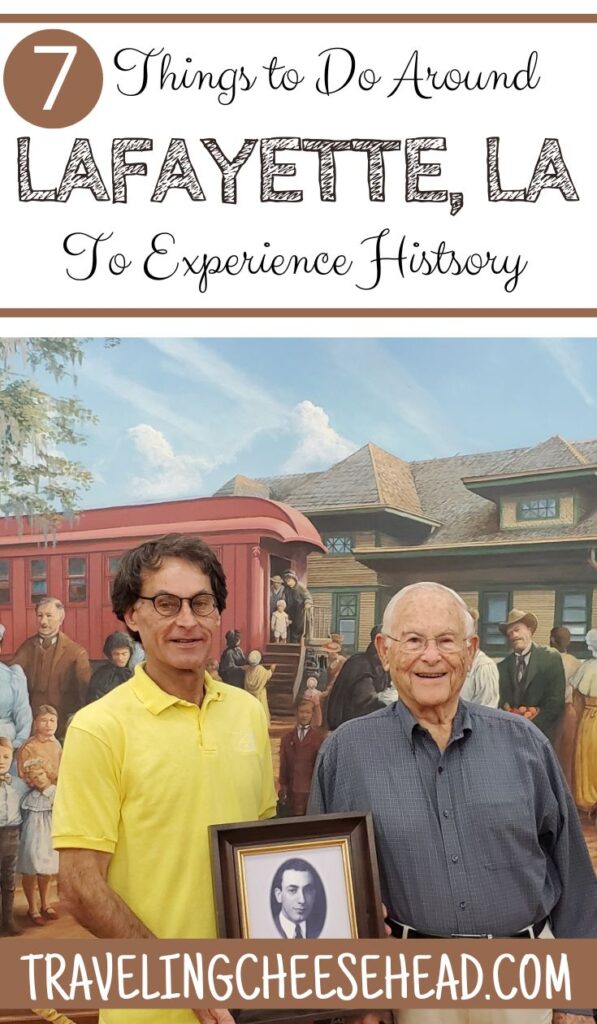
Many of the sites around here still bear the imprints of the people who lived here thousands of years ago. The capital of Lafayette Parish, Lafayette, Louisiana, offers a balanced blend of modern amenities and the enduring influence of Cajun and Creole culture. The Customs and traditions of today’s urban dwellers bear numerous traces of the city’s rich past.
JEAN LAFITTE NATIONAL HISTORICAL PARK AND PRESERVE
More than 30 plus square miles of wetlands make up the park; these areas were once part of the Mississippi Delta 1400 years ago and now serve as a showcase for the bayou’s history, culture, and natural environment. For the past seven thousand years, at least six delta movements have shaped the marshy coast of southern Louisiana.

The park features several locations that pay homage to Jean Lafitte’s privateering exploits and the events that followed. These locations are Eunice at the Prairie Acadian Cultural Center, Thibodaux at the Wetlands Acadian Cultural Center, and New Orleans at the French Quarter Visitor Center. Visit the Acadian Cultural Center to view The Cajun Way: Echoes of Acadia (A video). This 35-minute documentary explains all information regarding the Acadians and how they evolved into the Cajun culture of Louisiana.
Barataria Preserve is a national park where you can learn more about the coastal ecosystem, of which Barataria Bay is a prime example. You can avoid getting lost in the maze-like swamps, bayous, marshes, and forests without having to get wet feet by walking on a wooden boardwalk built through the swampy areas. However, dirt paths crisscross the landscape in the dry parts of the preserve.

Discover the city’s rich cultural heritage through engaging with its different communities. Experience authentic Cajun culture by talking to locals. Study the background of the Battle of New Orleans from the men who fought there in 1815. Jean Lafitte National Historical Park and Preserve offer a breathtaking look into the city’s past, with its network of bustling bayous and ingrained Cajun traditions. The numerous sites each have unique visiting hours.
It is fascinating to wander through, our visit happened at the same time a large school group was there. I loved watching what the kids were getting excited about – that has to be one of my top things. I loved listening to their questions as well as the little things that they noticed in photos, exhibits, etc.

VERMILIONVILLE HISTORIC VILLAGE
300 Fisher Rd. Lafayette, LA 70508
I adore living history museums! I believe it adds a multi-layered learning experience for guests when they have a costumed guide giving a peak into the past. We experienced three real characters who were so full of knowledge that they created the perfect interactive exhibits. If you have limited time in the area, this is one of the best places to make sure you hit and learn more about the early settlers.
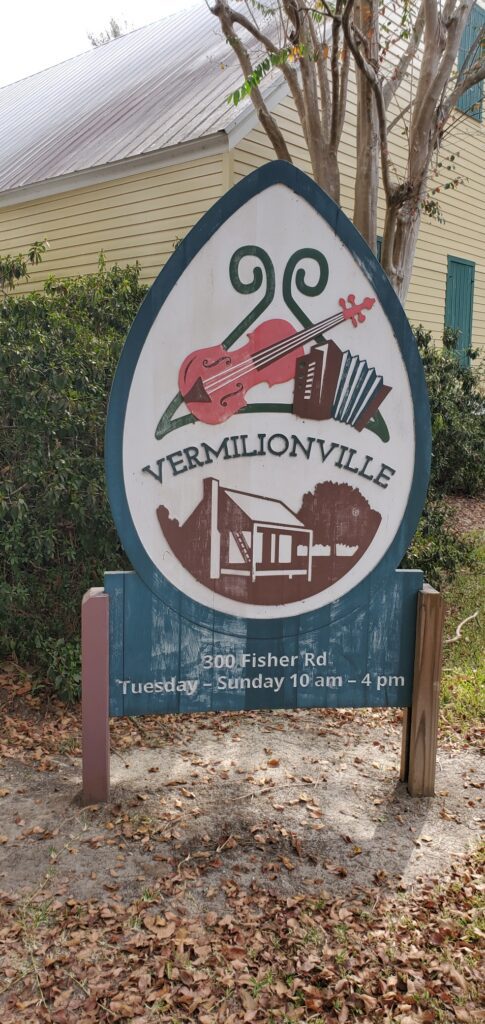
Vermilionville is an idyllic community situated on a plot of land adjacent to the banks of the Bayou Vermilion. The 23-acre living history museum and folklife park recognize the Acadian, Native American, and Creole communities for their significant roles in the region’s growth and development. The village features restored 18th-century houses, a working blacksmith shop, and a café offering Cajun and Creole food, so visitors can get a feel for what life was like for Acadian settlers back then.
I learned so many fun facts here – and after having been to Old World Wisconsin during sheep shearing weekend? It was fascinating to learn about the process of carding and spinning cotton – it took FOREVER compared to our northern wool project.

I LOVE how the entire place is wheelchair accessible. I saw ramps on the vintage buildings to make it a wheelchair and stroller-friendly place.
Pro Tip: They tailor their educational programs to their audience. We might have experienced a little more adult history on Creole country than the average family would have. This is basically a children’s museum for kids of all ages and their guides obviously love what they do.
MARTIN’S ACCORDIONS
2143 W. Willow St. Scott, LA 70583
Coming from Wisconsin, I had a totally different view of accordions before my visit. Our rich German heritage lends to a heavy history of Polka music. Heck, Roll Out The Barrel plays at every Wisconsin Badger game. (At least the ones I have been to). This was a treat to learn about a different kind of accordion, and how it evolved with their culture as live music evolved in the area.

Tour buses frequently stop by the Martin Accordions shop in north Lafayette, and if they give enough notice, the Martin family will perform for the group. For over 30 years, artists worldwide have relied on Martin Accordions for handcrafted, single-row, diatonic accordions. Both professionals and amateurs rely on their squeezeboxes to provide the signature smooth and rich sound of Cajun and Zydeco music.
When it comes to accordions, piano, diatonic, polka, concertina, and pretty much anything else with bellows, Martin is your one-stop store for anything from completely custom-made accordions to accordion repair and tuning on all brands and types.
The tour kicks off with JR Martin and his family taking you on a musical journey of Cajun music. Following that, you can observe the laborious process of building a Cajun accordion from exotic woods. Cajun accordions made by them are famous all around the globe.
The family-run business is always eager to tell the tale of its roots in Cajun and Creole music. See the instruments being made in real-time and hear a live demo of their music through history. Martin’s is the place to go if you want to buy an accordion, repair an old instrument, or just for the love of music. Saturday’s hours are 8 am-12 p.m., and Monday through Friday, 8 am-5 p.m.
ACADEMY OF THE SACRED HEART
Grand Coteau, Louisiana 70541 Address: 1821 Academy Rd.
To fully grasp the region’s cultural and historical significance, visiting some of the region’s oldest churches and cathedrals is essential. These stunning temples are the spiritual and cultural centers of their respective towns.
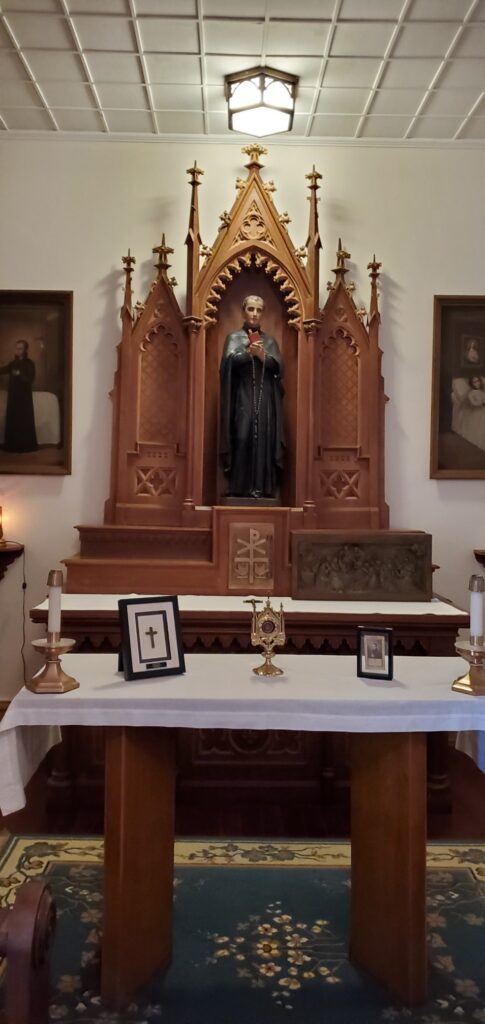
Founded in 1821, the Academy is the oldest higher education school west of the Mississippi River. It is also home to a museum, a shrine, elegant gardens, a stately oak forest, and an authenticated miracle. The Academy, established under the direction of Saint Philippine Duchesne, has been running without interruption through fire, plague, and multiple wars. The academy remained intact despite having thousands of Federal soldiers stationed on its fields throughout the Civil War.
Beautiful oak trees and manicured lawns surround the Academy. Blessed John Berchmans, whose role in the healing of Mary Wilson is the only Vatican-approved miracle in the country, is the focus of devotion at the Shrine of St. John Berchmans, located in the main building. After this miraculous event, John Berchmans was canonized. No walk-ins; only appointments are accepted. It is difficult to describe the feeling you get, sitting in her sick room, which is now a shrine.

ORPHAN TRAIN MUSEUM
223 S Academy St, Opelousas, LA 70570, United States
Think back to those grade school days when you lined up in gym class as team captains picked their roster. One by one students were picked out of the line and there was nothing worse than being in the final few – or being the actual last kid picked.
That is kind of what the Orphan Trains were like until The Sisters of Charity stepped in. Kids were placed on a train and shipped down the route. They would all get off at a stop as families would look them over and make a choice. The remaining children were marched back onto the train for the next stop.
How horrible it must have been each time you had to get back on the train, thinking you were totally unwanted or loveable!
That idea just breaks my heart –
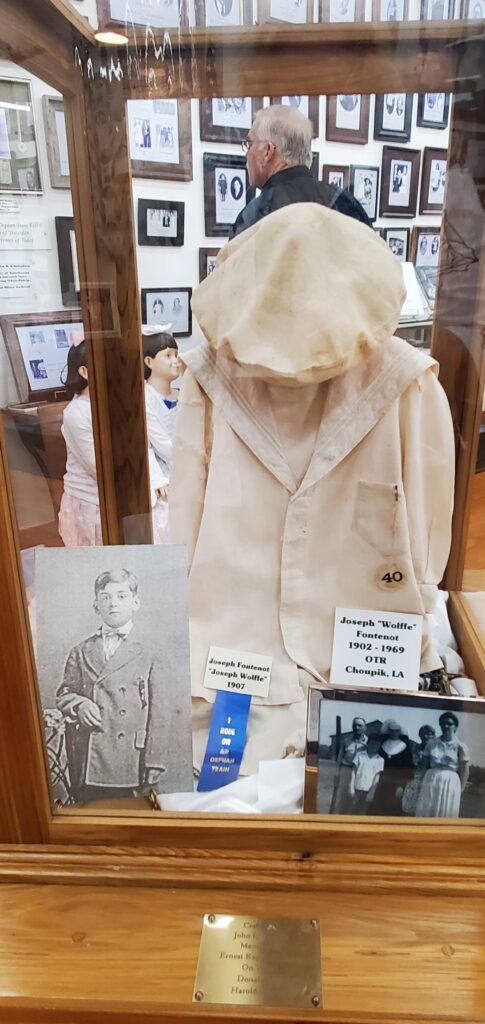
This is the perfect place to visit if you are a train fanatic – the history of this movement was heartfelt.
The orphan train museum in Louisiana focuses on the lives of people who rode the orphan train. The museum received numerous items from the orphan trains and has many stories of children preserved. The Foundling Home began placing its orphans with Catholic foster families in Opelousas in 1907. In April and May, three trains carrying kids rolled in.
In 1853, the city of New York saw hundreds of homeless and orphaned children, prompting the beginning of the Orphan Train Movement. The Sisters of Charity, who managed the New York Foundling & Orphan Asylum reached out to priests around the country to seek their help in placing the orphaned children in Catholic homes.
Louisiana’s foster care system transported almost 2,000 kids to rail stations in cities including Lafayette, New Orleans, and Opelousas. When that was over, they were shipped off to live with Catholic families in the country.
The museum’s board of directors, all of whom are related to the orphan train riders from Louisiana in some way, oversee operations in the building’s 2,400 square feet. The museum became popular immediately after it opened to the public in October 2009. Members of the museum’s extended family keep it running. They can share their family’s story with guests and place it within the larger narrative of the Orphan Train Movement in Louisiana.
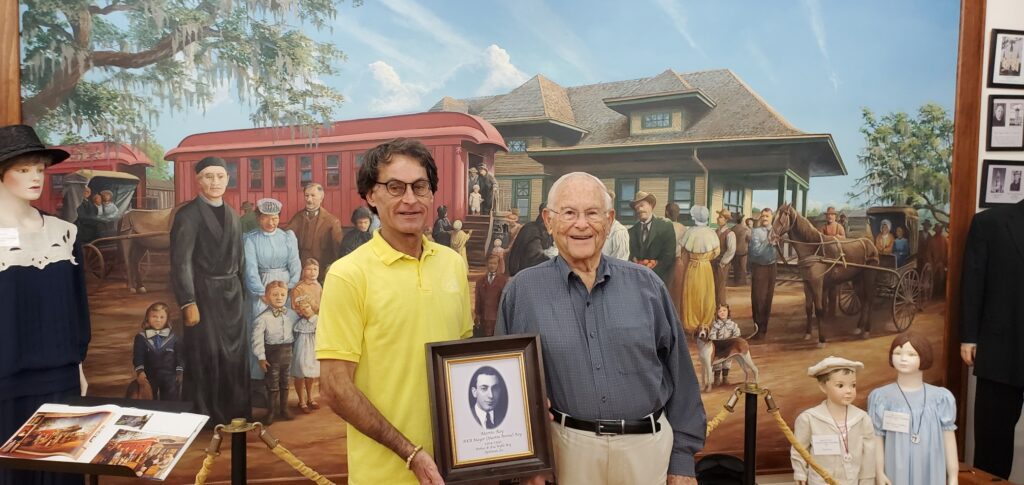
In addition to the museum’s extensive collection of historical documents, clothing, and photographs, many of the museum’s volunteers are direct relatives of orphan train travelers, lending the exhibits an air of authenticity.
The grounds also include sculptures depicting Orphan Train passengers in addition to the painting. The museum welcomes visitors daily from 10 a.m. to 3 p.m. and from 10 a.m. to 2 p.m. on Saturdays and Sundays. Private tours are also available upon request.
OPELOUSAS VILLAGE
828 E Landry St, Opelousas, LA 70570
Established in 1720, Opelousas Village is a suburb in the parish of St. Landry, located about 1.5 hours north of Lafayette. It is the third-oldest city in Louisiana. People worldwide flock there to learn the secrets of cooking crawfish boils and boudin sausages, among other Cajun culinary delights.

Since the city’s founding in the early nineteenth century, the area around Lafayette in the state’s southwestern corner has played a significant role in Louisiana’s geography, history, culture, and economy. Acadians, originally from France, and Canada, were among the earliest inhabitants. French Creoles rapidly followed them. The gastronomic and cultural advancements made by these trailblazers remain popular today.
“The old village,” in French, Le Vieux Village Heritage Park in St. Landry Parish, features historic buildings from Opelousas and the surrounding area. Although Le Vieux Village has been open since 1988, most of its structures date back to the 18th and 19th centuries.
Discover the rich heritage, vibrant culture, and beautiful architecture of Opelousas. Explore Opelousas’s history at the village’s general store, the Louisiana Orphan Train Museum (located in a converted train depot), and the unique Creole-style home of a former enslaved person.

The buildings from the 1800s, which were once considered architectural marvels, have been brought back to their former glory and are now used for community events.
I liked this place so much that I have a new flavor of coffee coming out – Olelousas King Cake Coffee comes out in ______ and profits will be donated to Le View Village Heritage Park to help them replace their signs and do maintenance.
CREOLE HERITAGE FOLKLIFE CENTER
1113 W Vine St, Opelousas, LA 70570
In addition to the historical sites, the Creole Heritage Folklife Center is a must-see for visitors. The facility, created with the cooperation of Creole folklorist Rebecca Henry, allows guests to re-experience traditional African-American rituals. Be better; not bitter; “Creole is family, culture, legacy, and custom which embodies all that ties the inner and outer families with their ancestral past,” as one definition puts it.
Rebecca Henry has spent the last 30 years telling the narrative of her life to guests at her Victorian estate in Opelousas. Henry thinks the exhibit’s antiques, technology, photographs, and artwork encourage visitors to research their family histories.
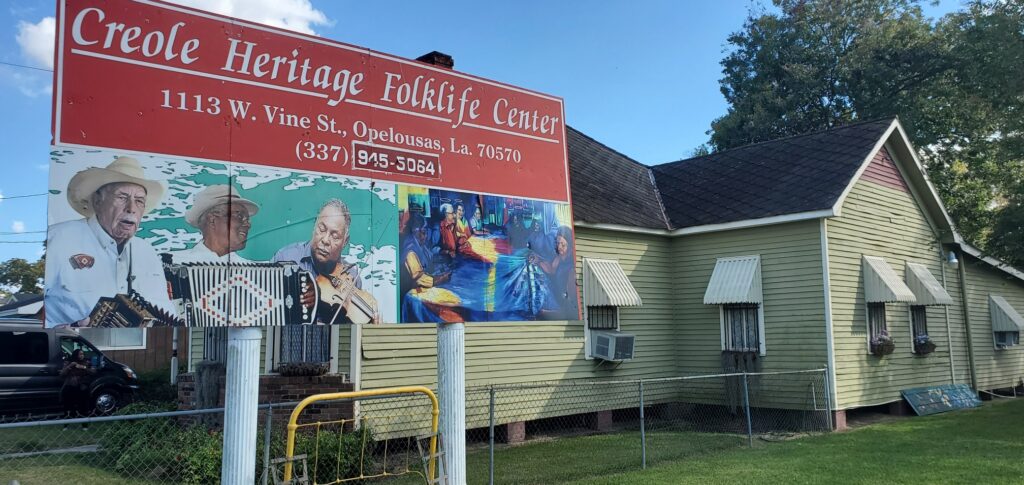
Before electricity or natural gas were widely available, ice boxes were the only source of domestic refrigeration. The indoor facilities were as essential as the outdoor ones—the museum stores extensive written and visual documentation of Creole history and culture. Explore the realm of traditional culture with its folk art, traditional medicine, modest tools, and everyday lifestyle. In the gift shop, you can find local items, such as paintings, quilts, fragrances, jams, jellies, dolls made from local fabric, and more.
Henry offers an intensive program for two weeks over the summer to local children. They learn about their ancestors’ rituals, songs, and dances as part of their schooling. It would be tragic if, despite enjoying the local culture’s art, traditions, and way of life, they only remembered one item from their time here. We offer weekly tours, and guests must reserve their spots in advance. Open Tuesday-Friday 12 pm-4 pm | Saturday 1 pm-4 pm | Sunday by appointment

FINAL THOUGHTS
The wealth of museums, landmarks, antiques, and other cultural sites in Louisiana provides numerous chances to get insight into the state’s history. These monuments and relics have been carefully preserved and restored to give visitors a one-of-a-kind opportunity to learn about the diverse cultures that have created Louisiana and continue to do so today.
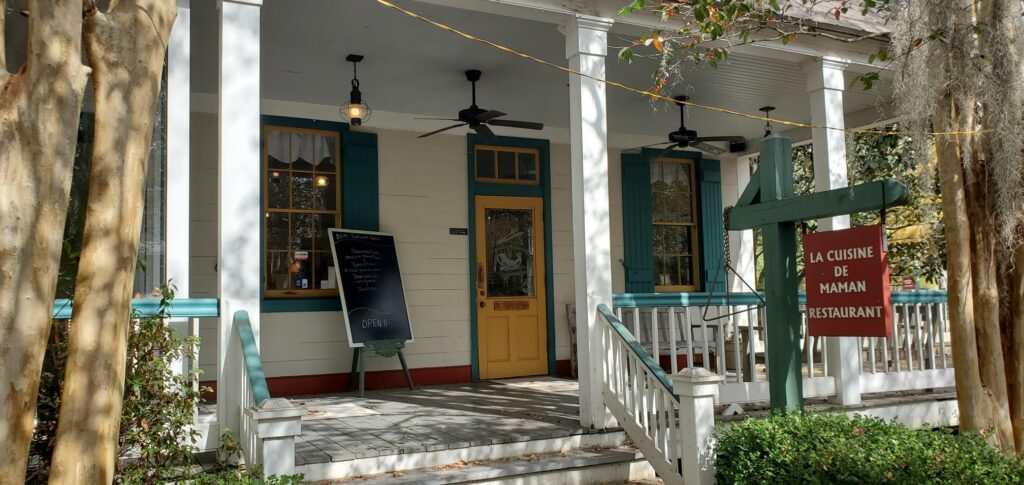
Places To Stay Nearby
Other articles you may like:
- 5 Best Indoor Water Parks in Illinois and Indiana
- Places to Eat in Omaha: Best Restaurants of 2025
- Rainy Day Indoor Activities in New Orleans: Your 2025 Guide to Staying Entertained Indoors
- Roadside Attractions in Iowa: Discovering Quirky and Unique Landmarks Along the Way
- 7 Best Steak Houses in Wisconsin Dells, Wisconsin


